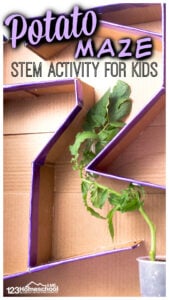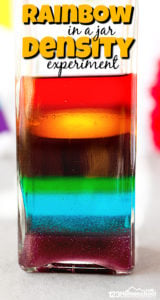In the spring our homeschool kids were able to take a fieldtrip to see first hand how maple syrup is made. Whether you are looking for an excuse to get out of the house or making a farm theme, this maple syrup for kids is a fun way to learn abou thow the thick, yummy maple syrup goes from sap in a tree to your favorite pancake topping! This homeschool field trips is fun for preschool, pre-k, kindergarten, first grade, 2nd grade, 3rd grade, 4th grade, 5th grade and 6th graders too. So join us on a virtual field trip as we discover how maple syrup is made for kids.

How Maple Syrup is Made
Teach kids something new by joining us as we discovered how maple syrup is made. This is a fun way to lean about maple syrup for kids from toddlers, preschoolers, kindergartners, grade 1, grade 2, grade 3, grade 4, grade 5, and grade 6 students. This would be a great homeschool fieldtrip in late winter to early spring depending on what your climate is like.
How maple syrup is made for kids
In our Midwest climate, March is usually prime maple syrup time. We learned that sap is gathered more easily in March because it starts to flow up the tree. By the time spring hits the sap is dispersed in the branches and leaves.
The best time to tap a tree is when the night is just below freezing and the day gets above freezing. This rising temperature creates pressure in the tree that makes the sap rise. Sap will flow for 4-6 weeks. You can tap a tree 1-4 times depending on how old the tree is. Trees that are over 100 years old can be tapped 4 times, just not directly above or below another previously made hole.
How to Tap a Maple Syrup Tree
To tap a tree you drill a hole (power or manually) about 3 feet off the ground. Now insert the spout or spile, you may need to use a hammer to get it in the hole. You should begin seeing tap come out pretty quickly.
Collect Sap from a Maple Tree
Now you will need to attach a clean container to collect the sap. Any food grade container will work. It is recommended that when sap is flowing you collect your sap daily, using a cheesecloth or similar to filter out any foreign material. Collected sap must be stored at about 38 F and used within 7 days. Sap is like milk and will spoil.
Turning Maple Sap into Maple Syrup
It is important to boil your maple syrup to kill any bacteria that may be there. The picture below is what maple sap looks like – clear and very runny.
Because of the large amount of steam, it is recommended to boil your sap outdoors.
Continue boiling until it reduces dramatically; add more sap and continue boiling. It takes about 20 galloons of sap to make 1 galloon of maple syrup.
When it has been boiled down it will be a golden color and will be somewhat thicker. On our fieldtrip we got to taste some freshly made maple syrup – YUM! (They had us use pasta to dip in the syrup to taste so the “spoons” could be composted. So clever!)
If you’d like to see how Maple Syrup is made first hand like we did check your local forest preserves, historic farms, and national parks for dates and locations in your area.
Where are you going on your next Homeschool Fieldtrip?
We’d all love to know where you’ve been this week. Please tell us about it in the comments!
Spring Science Ideas
Spring is the perfect time to study plants for kids! Here are some fun plant experiments to learn more about photosynthesis, pollination, capillary action, and more!
- Potato Maze – Summer STEM Activity for Kids
- Water pollution experiment for preschool Science Expeirment
- Simple Geranium Photosynthesis Experiment for Kids
- How to regrow celery in water with celery experiment worksheet
- Flower dye experiment Science Experiment for kids
- Color Changing Food Coloring Flower Experiment worksheet learning about capillar action
- Free Printable Seasons Worksheets w/ Free 4 Season Printables
- EPIC Lego Water Cycle Model for Kids
- Large Printable Weather Unit for kids
- Rain Cloud for Kids experiment and free worksheet
- Water Cycle for Kids Printable Book
- Easy Floating Egg Experiment
- Bouncy Egg in vinegar experiment worksheet
- Amazing Egg in a Bottle Science Experiment
- Fun Egg Drop Project
- How to Grow Rainbow Crystals EASILY at Home – Spring Science Activity
- Rainbow in a Jar Density Experiments
- Simply Rainbow Density Experiment for springtime
- Delicious Rainbow Stem scienc with jelly beans
- Frozen Erruptions – Rainbow Science Activities for Preschoolers
Spring Crafts for Kids
Whether you want to make colorful spring rainbow crafts, umbrella rain crafts, butterfly crafts, or baby animal craft projects, we’ve got some cute ideas!
- Simple Windsock Craft for kids
- Rainbow Painting with Kids using hot wheel cars
- Painting Spring Flowers with Celery flower activities for toddlers
- Simply stunning spring art for toddlers with a washable inkpad
- Rainbow Ice Cream Stick Craft
- Tissue Paper Butterly Craft for Kids
- Cute, printable Name flower craft
- Pretty Egg Carton Flowers
- Super cute and easy-to-make pasta necklace craft
Spring Craftivities
These fun ideas are a combination of spring crafts and spring activities:
- Silly Egg Head Spring Activities for Kids
- Grass Craft for Kids
- Milk Toast Rainbows -YUM!
- 100 Spring Crafts for toddlers, preschoolers, kindergartners, and elementary age students
- Rainy Day Bleeding Tissue Paper Art project for kids
- Fun-to-Make Bubble Art for Kids
- Simple Bubble Painting by blowing bubbles





















Leave a Reply